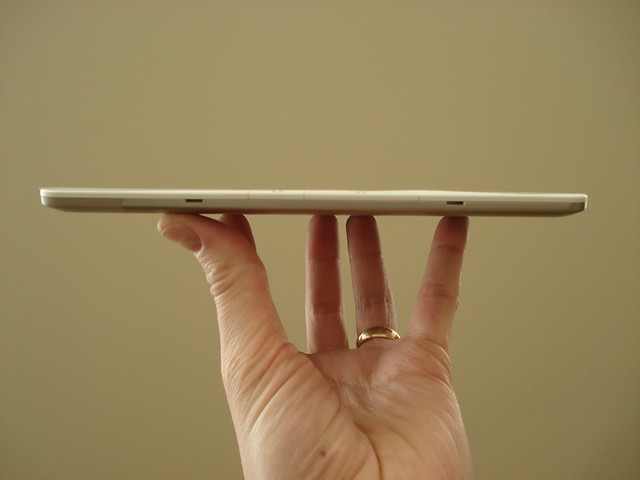
The Atlantic muses that the Kindle has killed the idea of the book cover. While the device has enabled all types of new activities (social annotations, lightness of being, euphoria), the lack of cover is not without metaphorical weight:
A digital book has no cover. There’s no paper to be bound up with a spine and protected inside a sturdy jacket. Browsers no longer roam around Borders scanning the shelves for the right title to pluck. Increasingly, instead, they scroll through Amazon’s postage stamp-sized pictures, which don’t actually cover anything, and instead operate as visual portals into an entire webpage of data (publication date, reader reviews, price) some of which can also be found on a physical cover and some of which cannot.
The abstract idea of the cover remains, though, as it does for album covers. Book designer Carin Goldberg remembers when she would sit in her room as a teenage girl listening to Joni Mitchell, holding the record in her arms. Since then she has designed hundreds of covers—among them are the 1986 edition of James Joyce’s Ulysses, books by Kurt Vonnegut, and Madonna’s first record. The cover “functions as an emotional visual touchstone,” Goldberg says. “It’s still something that we will always visualize in our heads as what that book looked like. It definitely becomes part of the experience.”
That idea that despite the lack of a physical cover, an imaginary experience with the cover is a reality for games as well. We looked at box art in our Back to School issue and how the early days of games are littered with terrible and overreaching covers. Those were meant to put the player in a particular mood even if the graphics of the games suggested otherwise. In the later retail years, games used covers as a way to attract new players, but in the age of digital distribution, trailers are more thrilling advertisment, a move that books are just now getting into as well. Perhaps the future of book covers looks more like videogames as Bill McCoy, the director of International Digital Publishing Forum, which oversees the EPUB system, suggests:
For McCoy, this is comparable to an entrée into a video game or DVD main menu page. If a movie were to just start playing, the viewer’s impulse would be, “What’s wrong, what’s going on here?” he explains, “You expect to get some choices and a menu of options.” Whereas the movie business has been sorting this out for the past 15 years, “We’re just in year one of that for digital books.”
For some, those introductions are simply an annoyance to be tolerated until they can get to the good stuff. When McCoy’s 9 year-old son plays video games, he skips past preliminary screens to jump right into play. For their part, readers with print copies rarely stare admiringly at a cover for 20 seconds before diving into the text. “People will come to see what works and what’s annoying,” he says.
Ironically, even for some, those menus don’t get you into the games quick enough. Oh well.
[Via The Atlantic] [img]